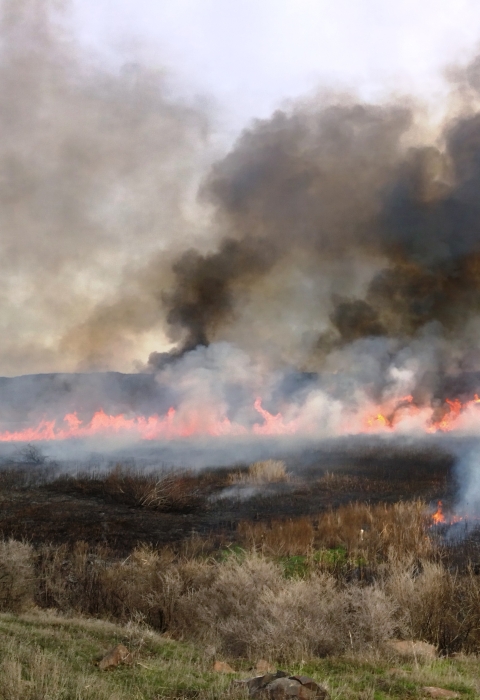BONNERS FERRY, Idaho – The U.S. Fish and Wildlife Service (Service) is planning to conduct prescribed burns at Kootenai National Wildlife Refuge near Bonners Ferry between October 2023 and February 2024. The prescribed fires will help restore habitat and reduce the risk of wildfire.
To ensure public and firefighter safety, roads and public use areas may need to close temporarily as operations are taking place. Smoky conditions may also reduce visibility to a level that would require additional short-term closures. Visitors will be able to find up to date information about the prescribed fires and any associated closures on the refuge website.
Prescribed fire operations at the refuge will be implemented by a team of highly skilled fire management personnel and wildland firefighters, under specific conditions outlined in a burn plan.
“Safety is the most important consideration when conducting a prescribed burn prescribed burn
A prescribed burn is the controlled use of fire to restore wildlife habitat, reduce wildfire risk, or achieve other habitat management goals. We have been using prescribed burn techniques to improve species habitat since the 1930s.
Learn more about prescribed burn ,” said Refuge Manager Shannon Ehlers.
A burn plan includes strict safety measures, such as a pre- and post-burn monitoring plan, identifying the ideal weather and wind conditions for the prescribed fire to take place, and tracking the air quality in the area. Burning will only occur when weather conditions and smoke dispersion are favorable. Because of the important role weather plays, managers identify a burn window – a specific length of time during which a prescribed fire might take place. The official day of the fire is not chosen until a day or few days before to ensure optimum conditions.
Refuge staff and fire personnel will work with federal, state, and county agencies and departments to complete these prescribed fire projects throughout the next several months. Prescribed burn operations represent many months and sometimes years of planning and preparation. An important conservation tool, prescribed fire is part of the overall management plan to restore habitat and reduce hazardous fuels and invasive species invasive species
An invasive species is any plant or animal that has spread or been introduced into a new area where they are, or could, cause harm to the environment, economy, or human, animal, or plant health. Their unwelcome presence can destroy ecosystems and cost millions of dollars.
Learn more about invasive species at the refuge.
Established in 1964 for migratory waterfowl, the refuge protects 2,774 acres of habitat for over 300 species of wildlife – 45 species of mammals, 22 species of fish, seven species of amphibians, six species of reptiles, and over 223 species of birds. Visitors enjoy hiking, hunting, fishing, and the unique auto tour route.
For more information about the refuge or planned prescribed burns, please contact refuge headquarters at (208) 267-3888.
###
The U.S. Fish and Wildlife Service works with others to conserve, protect and enhance fish, wildlife, plants and their habitats for the continuing benefit of the American people. For more information, visit https://www.fws.gov/about/region/pacific and connect with us on social media: Facebook, Instagram, Twitter, LinkedIn, Flickr, and YouTube.



